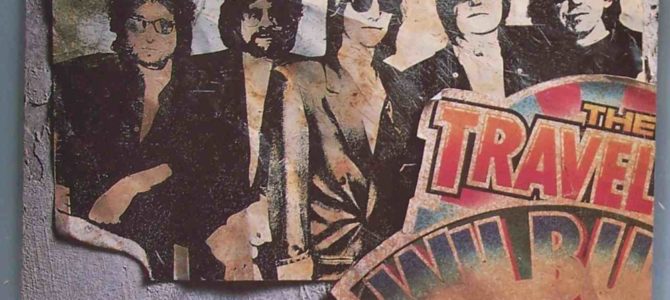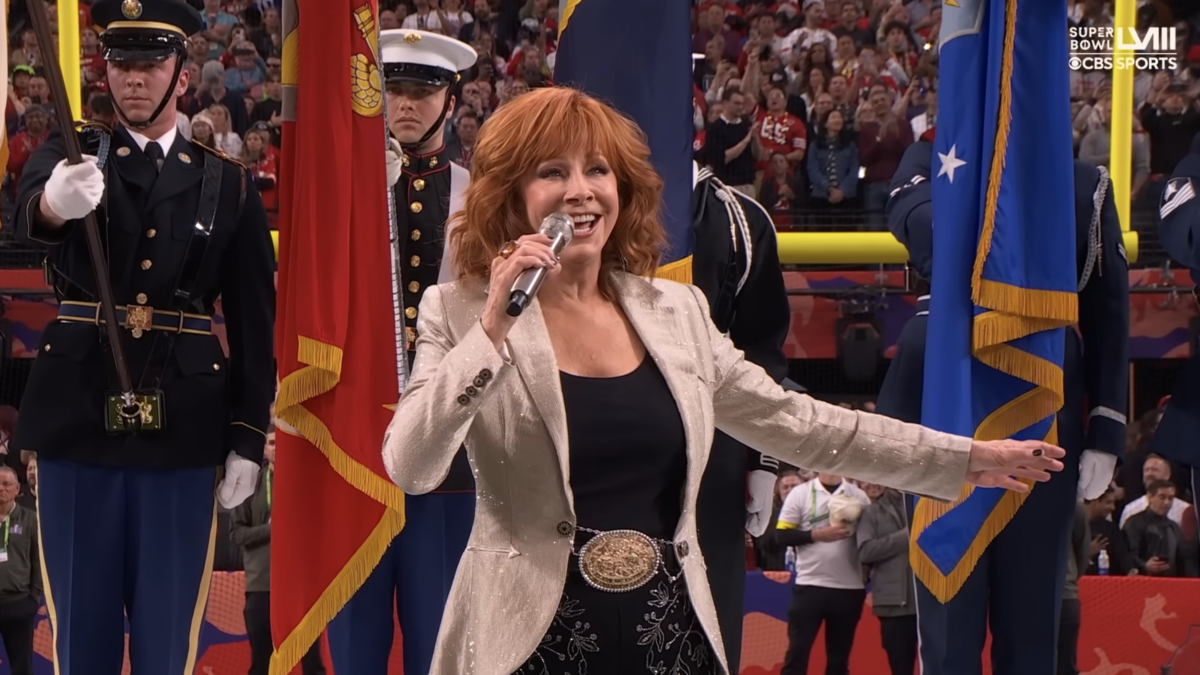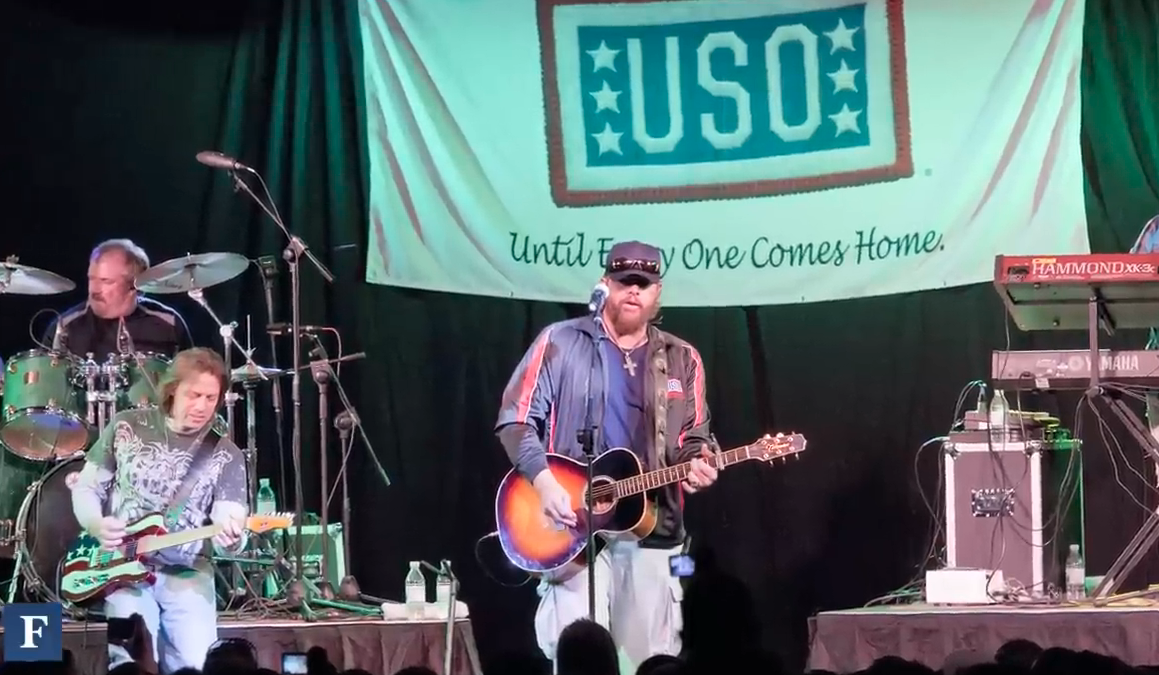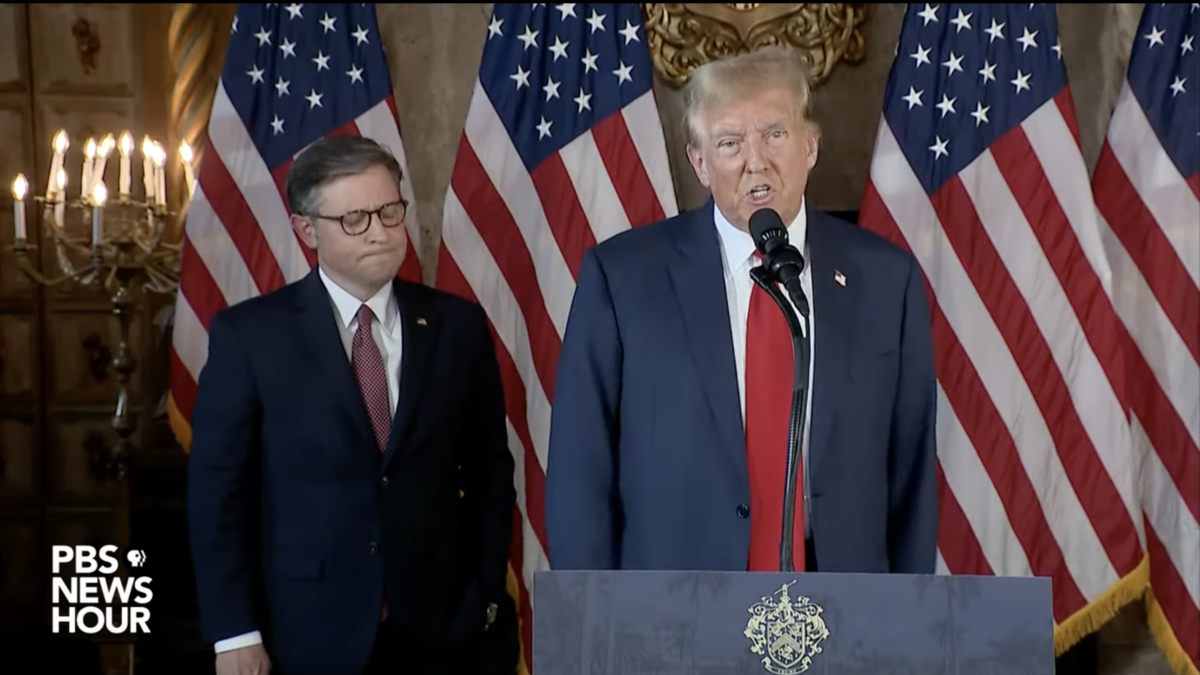
When Tom Petty died last year, the world lost not only the frontman of the Heartbreakers and an accomplished solo artist, it also lost another Traveling Wilbury. The Wilburys were the ultimate rock supergroup: Petty, George Harrison, Roy Orbison, Bob Dylan, and Jeff Lynne. Just pause a second to reflect on what an extraordinary collection of talent that is. It’s staggering. It’s almost unthinkable. It doesn’t even seem real. And it’s certainly worthy of a moment of appreciation, with today marking 30 years since the release of the band’s debut record, “The Traveling Wilburys Vol. 1.”
Harrison once said that the Wilburys likely never would’ve happened had they tried to plan it. The right set of circumstances just landed in place. In the spring of 1988, Harrison needed to record a B-side for his latest single off “Cloud Nine.”
Over dinner in Los Angeles, he enlisted the help of Lynne and Orbison, who were working on the latter’s comeback album, “Mystery Girl.” Because time was limited, they asked Dylan for the use of his home studio in Malibu, and he obliged. Later, Harrison went to Petty’s house to retrieve a guitar he’d left there and invited his friend to join. After the impromptu group dashed off “Handle with Care,” Warner Bros. decided it was too good to be a B-side. Having long wanted to form a band with close friends, Harrison then floated the idea of making a full-length album. Thus were the Traveling Wilburys born (complete with goofy pseudonyms).*
Completed in just six weeks, “The Traveling Wilburys Vol. 1” was released the following October. Marked by feel-good rock singalongs,** Lynne’s signature production polish, and plenty of clever humor, “Vol. 1” became a big hit. It earned the band a Grammy and eventually went triple platinum in the U.S., all without the benefit of any touring or live performances.
Two years later, after Orbison’s death had reduced the five-piece to a quartet, the Wilburys put out the jokingly titled “Vol. 3” to more modest critical and commercial success. And that was it. Despite interest from within the band and recurring media speculation, the Wilburys never recorded again. After just a few short years, this miraculous lark of a supergroup already belonged to the past.
What’s there to say about the Traveling Wilburys in 2018? Well, their brief history doesn’t leave much room for revisionism, which is refreshing. Decades later, the initial takes on “Vol. 1” and “Vol. 3” still largely hold up. “Vol. 1” is easily the better of the two. To this day, it’s still so fun, mischievous, and tuneful — a perfect record in its own unassuming way — with many of the songs obviously tongue-in-cheek.
There’s the overstated self-pity of “Handle with Care” and “Congratulations,” the double entendre-laced silliness of “Dirty World,” and the colorful incoherence of “Margarita,” which sounds like three song ideas stitched together. Unless you have no soul, you can’t help but feel a huge smile coming through all of it. The band was clearly having a blast.
The biggest laugh is courtesy of Bob Dylan — Mr. Funny and Lighthearted himself! — with “Tweeter and the Monkey Man,” a brooding mock-Springsteen tale of Jersey lowlifes that is dotted with nods to the Boss. Dylan weaves one Springsteen song title after another into the narrative: “Thunder Road,” “State Trooper,” “Mansion on the Hill,” “Stolen Car,” and more. It’s so over the top (“In Jersey anything’s legal / As long as you don’t get caught!”), and yet Dylan plays it so straight. It’s hard not to respect his utter commitment to bringing the story to life. He sells the thing from start to finish.***
If Dylan has the most memorable song on “Vol. 1,” you could say Roy Orbison (ponytail and all!) was behind the record’s most memorable moments. To quote Petty, the lovable and mild-mannered Orbison was their “ace in the hole.” There’s truly nothing else like his operatic voice, and what’s so different about hearing it on “Vol. 1” is that it’s mostly in spot duty, not the lead role. The soaring and melodramatic “Not Alone Any More” is Orbison’s only vocal showcase. The rest of the time he’s switching off with the other Wilburys or contributing to backup parts. It heightens the impact of his presence. When he’s on, you really take notice.
Think of “Handle with Care,” when he swoops in and sings, “I’m so tired of being lonely.” It takes the song to a completely different place. Or, in my view, the album’s most moving passage is Orbison’s turn on the terrific closer, “End of the Line.” When he enters about halfway through, it feels as if everything else recedes to the background and suddenly there’s an angel present. “Well it’s all right / Even when push comes to shove.” Orbison was a man well acquainted with tragedy, and here he is lending his voice to a song of beaming uplift and optimism.
But my single favorite moment from “Vol. 1” is on “Last Night,” a cheeky report of romance gone wrong, when Orbison sings, “I asked her to marry me / She smiled and pulled out a knife / The party’s just beginning she said / Your money or your life.” It’s a hilarious line (Dylan’s fingerprints are everywhere), especially when delivered by Orbison of all people. It epitomizes the magic that was possible with these five very different artists operating as a unit and sharing the spotlight.
The Wilburys abounded with mutual admiration and affection, but there was something extra special about Orbison’s involvement, likely due in part to his elder statesman status. In a documentary about “Vol. 1,” nearly everyone comments on what a privilege it was working with him. As Petty mentions, whenever he took a step back to process everything that was happening, he would often think, “Wow, Roy Orbison’s in the band!” Or as Wilburys drummer Jim Keltner once observed, “It was Roy’s presence that made them rise to the occasion.”
Orbison died of a heart attack in December of 1988, well before work began on “Vol. 3.” It’s one reason the sequel didn’t live up to the original. You can’t lose the incomparable Orbison**** and expect to maintain the same level of artistry. Not only was his voice beautiful, it also brought a lot of variety to the sonic canvas of “Vol. 1.”
More generally, it’s just not easy to make that kind of record and capture that kind of spark a second time. On “Vol. 1,” Harrison and the boys were creating the Traveling Wilburys. There was spontaneity in the air. They were tapping into fresh ideas. On the energetic but less inspired “Vol. 3,” they were performing as the Wilburys. They had an image to uphold, characters to inhabit. That’s why it sometimes feels forced and too reliant on schtick (see: “The Devil’s Been Busy,” “7 Deadly Sins,” and “Wilbury Twist” ).
The best way to approach “Vol. 3” is as a deep-cuts record. The opening tracks, “She’s My Baby” and “Inside Out,” both make for good times, but the song quality picks up further into the album. Take “Poor House,” a stomping country-rock tune that has an infectious, free-flowing energy to it. Or the aching ballad “You Took My Breath Away.” It strikes an authentically heartfelt tone, with the vocal harmonies between Petty and Lynne being a standout component. Best of all is “New Blue Moon.” There are days when it’s my favorite Wilburys song. It’s so sweet and breezy yet full of longing. And it shakes and swings just right. I especially love the drawn-out phrasing of the lead vocal. The overall effect is something like nostalgia: a wonderful warmth streaked with melancholy.
It would almost seem wrong to talk about the Wilburys’ “legacy.” The word just doesn’t fit with who the band was and the joyous, egos-set-aside spirit of their collaboration. They didn’t have any serious ambitions or expectations. They weren’t aiming for anything Great or Significant, some kind of monument to their collective genius. Instead, what they left behind was something simple and charming, but sacred in its own way: a celebration of camaraderie and brotherhood.
The Wilburys loved making music, and they loved each other’s company. They were a hang-out band, an outlet for everyone to let their guard down, have a laugh, and just be one of the guys (yes, even Dylan). No pressure; this wasn’t work for them. Petty once said those were among the best days of his life. But because of who those guys happened to be, the band will always represent something remarkable, even sui generis. If anything stands as their legacy, it’s this epic-meets-modest alchemy: towering talent in the service of fun and friendship. There will never again be anything like the Traveling Wilburys.
*According to “The Traveling Wilburys: The Biography,” the newly minted band celebrated by breaking bread together at Denny’s. True legends.
**Just watch this hootenanny-style cover of “Handle with Care” from George Fest a few years back. It positively oozes with bonhomie and good vibes.
***Dylan fanatics will note that “Zimmy” pulls the same trick on “Tweeter” that he did on “Black Diamond Bay”: he tells a dramatic third-person narrative and then switches to first-person at the very end to reveal himself as nothing more than a consumer of the nightly news.
****There was chatter in the media about who could replace Orbison, and names like Roger McGuinn and Del Shannon were mentioned. Harrison himself identified Little Richard, Jerry Lee Lewis, and Keith Richards as Wilburys material while saying the opposite for Hall & Oates and George Michael. I understand his point, but it was still very “get-off-my-lawn.” The “Quiet Beatle” could be quite the grouch.









